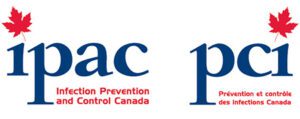Secondary Health Effects of Mold
Secondary Effects of Mold Exposure
In yesterday’s blog we discussed one of the primary health effects you and / or your family could contract through exposure to mold contamination in your home, (asthma).
Today we would like to talk about some of the secondary health effects we are seeing as a result of exposure
Upper/ lower respiratory allergies and other lung related illnesses.
Because spores are tiny (less than 4 microns in size – i.e. over 250,000 spores can fit on a pin head) they can bypass our
built-in defence mechanisms and accumulate in the lower lungs. Subsequently, the lungs become a roadway for toxic
materials to travel through the bloodstream with the oxygen. The body’s reaction to the toxins may permanently affect the lungs’
ability to transfer oxygen into the bloodstream. The lung tissue can become permanently scarred with each exposure to mold
spores increasing the damage. The body’s last defence against these tiny invaders is to develop an allergy producing cold or
pneumonia-like symptoms.
The most common response to mold exposure may be allergy. People who are atopic, that is, who are genetically capable of
producing an allergic response, may develop symptoms of allergy when their respiratory system or skin is exposed to mold or
mold products to which they have become sensitized. Sensitization can occur in atopic individuals with sufficient exposure.
Allergic Reactions Allergic Reactions can range from mild, transitory responses, to severe, chronic illnesses. The Institute of
Medicine (1993) estimates that one in five Americans suffers from allergic rhinitis, the single most common chronic disease
experienced by humans. Additionally, about 14 % of the population suffers from allergy-related sinusitis, while 10 to 12% of
Americans have allergically-related asthma. About 9% experience allergic dermatitis. A very much smaller number, less than
one percent, suffer serious chronic allergic diseases such as allergic bronchopulmonary aspergillosis (ABPA) and
hypersensitivity pneumonitis (Institute of Medicine, 1993). Allergic fungal sinusitis is a not uncommon illness among atopic
individuals residing or working in moldy environments. There is some question whether this illness is solely allergic or has an
infectious component. Molds are just one of several sources of indoor allergens, including house dust mites, cockroaches,
effluvia from domestic pets (birds, rodents, dogs, cats) and microorganisms (including molds).
While there are thousands of different molds that can contaminate indoor air, purified allergens have been recovered from only
a few of them. This means that atopic individuals may be exposed to molds found indoors and develop sensitization, yet not be
identified as having mold allergy. Allergy tests performed by physicians involve challenge of an individual’s immune system by
specific mold allergens. Since the reaction is highly specific, it is possible that even closely related mold species may cause
allergy, yet that allergy may not be detected through challenge with the few purified mold allergens available for allergy tests.
Thus, a positive mold allergy test indicates sensitization to an antigen contained in the test allergen (and perhaps to other
fungal allergens) while a negative test does not rule out mold allergy for atopic individuals.
Type 1 Allergies: Immediate type – hypersensitivity. Fungi may cause allergic rhinitis similar to that caused by pollen grains,
and, after asthmatics become allergically sensitized to one or more of them, they may trigger asthma attacks. Most asthmatics
have multiple allergies.
Type 3 Allergies: Delayed type hypersensitivity. In certain susceptible individuals, after prolonged, heavy exposure, fungi
may cause hypersensitivity pneumonitis (allergic alveolitis), characterized by wheeze, shortness of breath, cough, chest
tightness, and in some prolonged cases, pulmonary fibrosis. There has been a custom of giving each new subtype of
hypersensitivity pneumonitis (HP) an evocative medical nickname, such as farmer’s lung, maple bark stripper’s disease, and
so on. “Humidifier fever” is the most common such name associated with indoor mold proliferation, since HP is often
associated with contaminated humidifiers. HP has also, however, been reported from indoor mold proliferations on structural
or furnishing elements, such as walls or shower curtains. A HP patient should have strong serum precipitins specific to the
fungus (or bacterium or protozoan) which is causing the reaction. Bronchioalveolar lavage or biopsy will usually show elevated
numbers of eosinophil cells, showing eosinophilic immune activation.
Bronchopulmonary Mycosis: Persons who have been asthmatic for many years may progress to have their bronchial
passages colonized by a fungus, usually Aspergillus fumigatus, but sometimes another organism such as Bipolaris
hawaiiensis, Wangiella dermatitidis, or Pseudallescheria boydii. Constant allergic response helps to maintain the fungal
colonization, and first-line therapy is often with steroids: bringing down the level of inflammation may result in elimination of the
colonizing organism. Some studies have made tentative links between exacerbations of ABPA and moldy houses. Cystic
fibrosis patients also may get allergic bronchopulmonary mycosis.
Allergic Mycotic Sinusitis: A colonizing infection of mucus adhering to the sinus walls. Very similar to ABPA otherwise,
except that patients need not necessarily have had asthma or cystic fibrosis. To date no discrete connection with indoor mold
proliferation has been shown in any individual cases, but that may be from lack of investigation. Infections From molds that
grow in indoor environments is not a common occurrence, except in certain susceptible populations, such as those with
immune compromise from disease or drug treatment. A number of Aspergillus species that can grow indoors are known to be
pathogens. Aspergillus fumigatus (A. fumigatus) is a weak pathogen that is thought to cause infections (called aspergilloses)
only in susceptible individuals. It is known to be a source of nosocomial infections, especially among immune-compromised
patients. Such infections can affect the skin, the eyes, the lung, or other organs and systems. A. fumigatus is also fairly
commonly implicated in ABPA and allergic fungal sinusitis. Aspergillus flavus has also been found as a source of nosocomial
infections (Gravesen et al., 1994). There are other fungi that cause systemic infections, such as Coccidioides, Histoplasma,
and Blastomyces. These fungi grow in soil or may be carried by bats and birds, but do not generally grow in indoor
environments. Their occurrence is linked to exposure to wind-borne or animal borne contamination.
https://www.ncbi.nlm.nih.gov/pmc/articles/PMC3179194/
https://www.ncbi.nlm.nih.gov/pmc/articles/PMC3206248/
Adverse Reactions to Odor: Odors produced by molds may also adversely affect some individuals. Ability to perceive
odors and respond to them is highly variable among people. Some individuals can detect extremely low concentrations of
volatile compounds, while others require high levels for perception. An analogy to music may give perspective to odor
response. What is beautiful music to one individual is unbearable noise to another. Some people derive enjoyment from odors
of all kinds. Others may respond with headache, nasal stuffiness, nausea or even vomiting to certain odors including various
perfumes, cigarette smoke, diesel exhaust or moldy odors. It is not know whether such responses are learned, or are
time-dependent sensitization of portions of the brain, perhaps mediated through the olfactory sense, or whether they serve a
protective function. Asthmatics may respond to odors with symptoms.
Mucous Membrane and Trigeminal Nerve Irritation:
A third group of possible health effects from fungal exposure derives from the volatile compounds (VOC) produced through fungal primary or secondary metabolism, and released into
indoor air. Some of these volatile compounds are produced continually as the fungus consumes its energy source during
primary metabolic processes. (Primary metabolic processes are those necessary to sustain an individual organism’s life,
including energy extraction from foods, and the syntheses of structural and functional molecules such as proteins, nucleic
acids and lipids). Depending on available oxygen, fungi may engage in aerobic or anaerobic metabolism. They may produce
alcohols or aldehydes and acidic molecules. Such compounds in low but sufficient aggregate concentration can irritate the
mucous membranes of the eyes and respiratory system. Just as occurs with human food consumption, the nature of the food
source on which a fungus grows may result in particularly pungent or unpleasant primary metabolic products. Certain fungi can
release highly toxic gases from the substrate on which they grow. For instance, one fungus growing on wallpaper released the
highly toxic gas arsine from arsenic containing pigments.
Fungi can also produce secondary metabolites as needed. These are not produced at all times since they require extra energy
from the organism. Such secondary metabolites are the compounds that are frequently identified with typically “moldy” or
“musty” smells associated with the presence of growing mold. However, compounds such as pinene and limonene that are
used as solvents and cleaning agents can also have a fungal source. Depending on concentration, these compounds are
considered to have a pleasant or “clean” odor by some people. Fungal volatile secondary metabolites also impart flavors and
odors to food. Some of these, as in certain cheeses, are deemed desirable, while others may be associated with food
spoilage. There is little information about the advantage that the production of volatile secondary metabolites imparts to the
fungal organism. The production of some compounds is closely related to sporulation of the organism. “Off” tastes may be of
selective advantage to the survival of the fungus, if not to the consumer.
In addition to mucous membrane irritation, fungal volatile compounds may impact the “common chemical sense” which
senses pungency and responds to it. This sense is primarily associated with the trigeminal nerve (and to a lesser extent the
vagus nerve).
https://www.medicinenet.com/trigeminal_neuralgia/patient-comments-3683.htm
https://www.medhelp.org/posts/Trigeminal-Neuralgia/mold/show/1335840
This mixed (sensory and motor) nerve responds to pungency, not odor, by initiating avoidance reactions,
including breath holding, discomfort, or paresthesias, or odd sensations, such as itching, burning, and skin crawling. Changes
in sensation, swelling of mucous membranes, constriction of respiratory smooth muscle, or dilation of surface blood vessels
may be part of fight or flight reactions in response to trigeminal nerve stimulation. Decreased attention, disorientation,
diminished reflex time, dizziness and other effects can also result from such exposures (Otto et al., 1989). It is difficult to
determine whether the level of volatile compounds produced by fungi influence the total concentration of common VOCs found
indoors to any great extent. A mold-contaminated building may have a significant contribution derived from its fungal
contaminants that is added to those VOCs emitted by building materials, paints, plastics and cleaners. Miller and co-workers
(1988) measured a total VOC concentration approaching the levels at which Otto et al., (1989) found trigeminal nerve effects. At
higher exposure levels, VOCs from any source are mucous membrane irritants, and can have an effect on the central nervous
system, producing such symptoms as headache, attention deficit, inability to concentrate or dizziness.
Vascular System: Increased vascular fragility, hemorrhage into body tissues, or from lung, e.g., aflatoxin, satratoxin, roridins
Digestive System: Diarrhea, vomiting, intestinal hemorrhage, liver effects, i.e., necrosis, fibrosis: aflatoxin; caustic effects on
mucous membranes: T-2 toxin; anorexia: vomitoxin.
Respiratory System: Respiratory distress, bleeding from lungs e.g., trichothecenes Nervous system, tremors, incoordination,
depression, headache, e.g., tremorgens, trichothecenes.
Cutaneous System: Rash, burning sensation sloughing of skin, photosensitization, e.g., trichothecenes Urinary system,
nephrotoxicity, e.g. ochratoxin, citrinin.
Reproductive System: Reproductive System – infertility, changes in reproductive cycles, e.g. T-2 toxin, zearalenone.
Immune System: Changes or Suppression: many mycotoxins. It should be noted that not all mold genera have been tested for
toxins, nor have all species within a genus necessarily been tested. Conditions for toxin production varies with cell and diurnal
and seasonal cycles and substrate on which the mold grows, and those conditions created for laboratory culture may differ
from those the mold encounters in its environment. Toxicity can arise from exposure to mycotoxins via inhalation of
mycotoxin-containing mold spores or through skin contact with the toxigenic molds. A number of toxigenic molds have been
found during indoor air quality investigations in different parts of the world. Among the genera most frequently found in numbers
exceeding levels that they reach outdoors are Aspergillus, Penicillium, Stachybotrys, and Cladosporium. Penicillium,
Aspergillus and Stachybotrys toxicity, especially as it relates to indoor exposure.


Maple Leaf Mold Inc. is a certified mold / asbestos removal and biological disinfection / air analysis company located in Toronto that uses certified IICRC technicians for all testing and remediation projects.
We are a professionally licensed firm experienced in testing, verifying and removing Mold / Asbestos / Lead and other environmental contaminants as well as providing disinfection services to control and kill biological contaminants.
Call 416-254-7256 to talk with us about your issue anytime.






